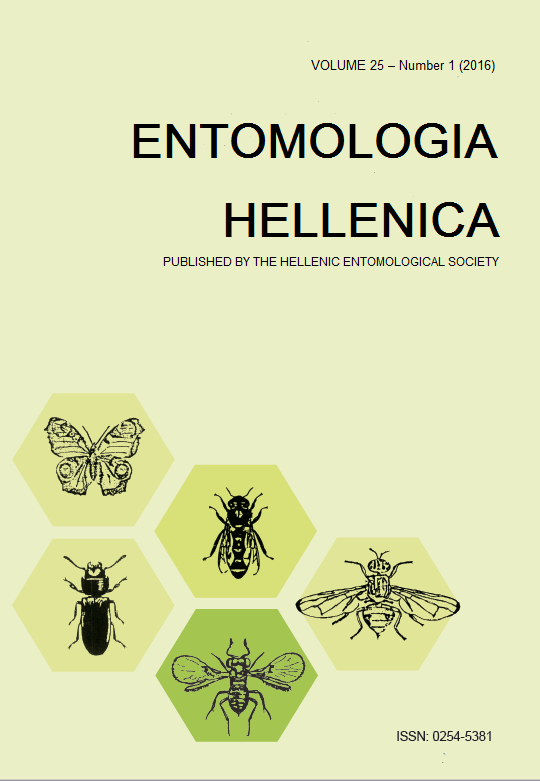Effects of sticky traps on Dacnusa sibirica, Diglyphus isaea and Nesidiocoris tenuis

Abstract
The potential of commonly used sticky traps (yellow, blue and transparent) to attract the two major natural enemies of the leaf miners, Dacnusa sibirica Telenga (Hymenoptera: Braconidae) and Diglyphus isaea (Walker) (Hymenoptera: Eulophidae) was recorded. In addition, we studied their efficacy to capture the effective predator Nesidiocoris tenuis (Reuter) (Hemiptera: Miridae) which in high population levels may cause damage on tomato crop. The captures of D. sibirica and D. isaea were negligible. Captures of N. tenuis adults were significantly higher on yellow and blue colour traps than on transparent traps. The difference of captures between yellow and blue traps was not significant. Furthermore, the effectiveness on N. tenuis was much increased when the traps were established next to the tomato plant apex. The results show that the use of coloured sticky traps and release of the leafminer parasitoids may be combined. Furthermore, it was clearly shown that sticky traps may not be compatible with the release of the generalist predator N. tenuis; however, yellow and blue traps should be further evaluated for its mass trapping.
Article Details
- How to Cite
-
Perdikis, D. C., Arvaniti, K. A., & Papadimitriou, D. M. (2016). Effects of sticky traps on Dacnusa sibirica, Diglyphus isaea and Nesidiocoris tenuis. ENTOMOLOGIA HELLENICA, 25(1), 1–11. https://doi.org/10.12681/eh.10444
- Issue
- Vol. 25 No. 1 (2016)
- Section
- Articles

This work is licensed under a Creative Commons Attribution-NonCommercial-ShareAlike 4.0 International License.
Authors who publish with this journal agree to the following terms:
Authors retain copyright and grant the journal right of first publication with the work simultaneously licensed under a Creative Commons 4.0 license.
Authors are able to enter into separate, additional contractual arrangements for the non-exclusive distribution of the journal's published version of the work (e.g. post it to an institutional repository or publish it in a book), with an acknowledgement of its initial publication in this journal. Authors are permitted and encouraged to post their work online (preferably in institutional repositories or on their website) prior to and during the submission process, as it can lead to productive exchanges, as well as earlier and greater citation of published work.


